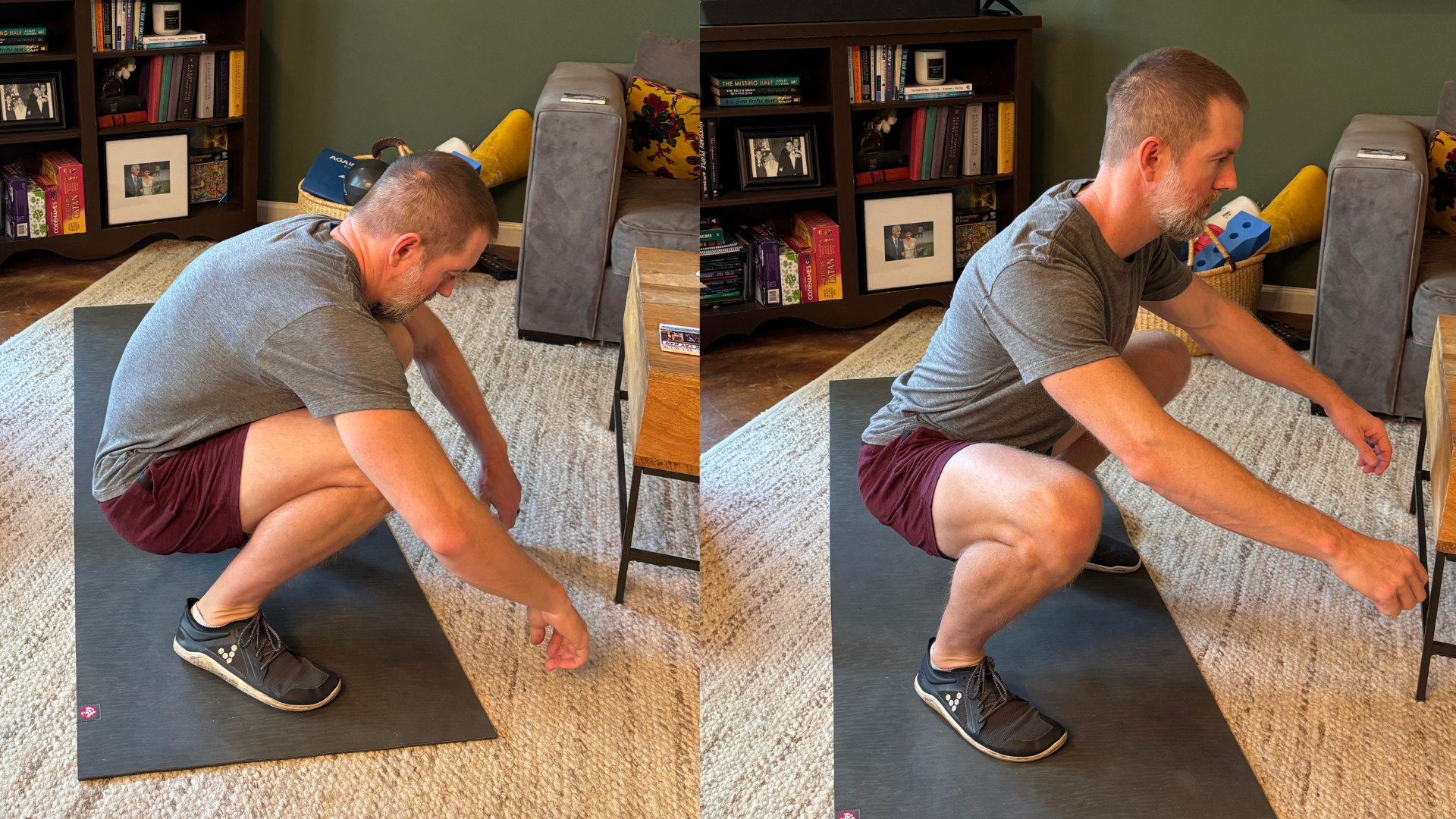Staying Cool in the Heat
Written by Kyle Ligon - MovementLink.FIT Head Coach
It’s HOT outside!!! So, how do we stay cool in the summer heat?
Well, first of all, we don’t want to totally avoid the heat. The beneficial impacts hormetic stressors can have on us is incredible. A hormetic stress is a stimulus (think heat exposure, cold exposure, exercise, lectins in plants we eat, etc.) in which a low dose causes stress which then our body recovers from in a net-positive way. Hormetic stresses are beneficial to us relative to no-dose, but in high doses can be harmful and even dangerous.
Physical and Emotional Stress, When Dosed Appropriately, is Enhancing
Appropriate amounts of heat stress not only helps us become adapted to the heat, making our inevitable lives in it more enjoyable, but causes the release of heat-shock proteins (HSPs). HSPs can stay elevated for days and, among other health improvements, can work to improve endurance and muscle mass. How much heat stress should we be getting? Everyone is so different and the temperature and the medium matter a lot. When we are using a 180+ degree sauna or a 105 degree hot tub, the amount of time we need may be in the 10-20 minute range. With outdoor temperatures of 100 degrees, you may need a few hours. But really, there are no magic numbers here as it all depends on your core body temperature, so your entry core body temperature and your activity level will make the dosage that causes heat stress to be highly variable.
Here’s how I like to navigate what I feel are appropriate amounts of heat stress for me: Typically, starting out the heat just feels hot, but, with prolonged exposure, there’s typically a moment where I’ll start doing things (sometimes subconsciously) to attempt to cool myself down. Maybe I’ll sit up or take our hands out of the hot tub or maybe I just get that fight or flight feeling of wanting to get out of the heat. Typically my heart rate will be elevated and that’s when I know I’m in the heat stress zone. It’s ability to trigger a fight or flight feeling is very similar to exercise for me. Just doing reps of an exercise is not necessarily stressful, you have to do a certain amount of reps at a certain intensity before reps start becoming effective. My heart rate gets elevated and I start having some fight or flight feelings making me want to slow down, stop, or question why I’m doing it. Heat stress feels similar to me.
If the heat is extreme, like in a sauna or hot tub and heat stress is my goal, I like to spend 5-20 minutes in the heat after that heat stress moment. If it’s just outdoors, I may still have an hour or two in me. These days, my heat stress typically comes from playing outdoor pickleball, so the heat is embraced, but because I want to be out there playing, for me it’s not so much trying to get enough heat, but making sure I get out of the heat soon enough to avoid heat stroke and also just to be sure I am not completely destroyed for the rest of the day. Once you experience a really big heat exposure, just like if you did the hardest workout you’ve ever done in your life, the impacts of that stress can stick with you all day.
With heat exposure, we want to be careful to do it safely…
Signs that You Should Get Out of the Heat and Cool Down
Headache
Nausea
Dizziness
Weakness
Irritability
Cramps
Chills
Always err on the side of immediate medical treatment if you or someone are not acting in a normal way:
Confusion
Seizures
Fainting, etc.
Performance in the Heat and Tips for Staying Cool
The two biggest factors that make our muscles decrease in performance and will ultimately stop them from working altogether are temperature and acidity. The hotter it gets, the bigger our drops in performance. This is why when experts are trying to predict if a world record marathon is possible, the temperature being around 50-55 degrees is so important. Each degree above that has a negative impact on core body temperature and therefore performance.
My tips for staying cool in the summer heat is all about lowering your core body temperature as much as you can.
Drink Very Cold Water or Even a Slushie
Note: as it gets hotter we are going to sweat more and an Electrolyte Mix (like LMNT) can be a great way to replace what we are losing in sweat. Our muscles need fuel like fat, carbohydrates, and lactate, but they also need specific molecules for electrical signaling and converting these fuels into into usable ATP. Water alone won’t replenish everything we are losing in sweat, so prolonged athletic stuff, especially in the heat, should be supplemented with electrolytes.
Hold something in your hands that is around 50-60 degrees
The bottoms of our feet, our hands, and our face are the areas that absorb and release the most heat. By holding something cool in your hands, it seems that you can have a significant impact on core body temperature and therefore performance (https://pubmed.ncbi.nlm.nih.gov/22076097/). Note: too cold and it can make our blood vessels contract and not be as effective, but my guess is that too cold is better than nothing if ice or an ice pack is the only thing handy.
Sweat cools us by evaporating into the air. In high humidity, this becomes less and less effective. When we are sweaty, a breeze can feel so good as it helps evaporate our sweat, so if it’s not breezy, a fan or simply moving our arms around can replicate some wind.
Direct sunlight onto skin seems to increase cognitive heat stress symptoms like “reduced psychomotor performance, loss of concentration, and reduced alertness,” but may not actually increase heat stress (https://www.ncbi.nlm.nih.gov/pmc/articles/PMC8303297). So, direct sunlight may make heat stress feel worse without adding to any hormetic benefits. Direct sunlight can be mitigated with shade and wearing light clothing that reflects light instead of absorbing it like darker colors would.
Note on Sunscreen: This was a bummer a bummer to learn: Certain sunscreen ingredients actually absorb into our bloodstream and can cross the blood brain barrier (https://www.ncbi.nlm.nih.gov/pmc/articles/PMC5615097/). Additionally, inhaling the spray sun screen can be detrimental to our health. Unfortunately, we may be paying a price for these conveniences, but there are less convenient sunscreens that don’t have these ingredients in them. It does seem the like jury is still out on how significant this will actually be on our health, but with other sun protection alternatives, I’ll stick on the safe side until we learn otherwise. I’ve been using a brand ThinkSport and like it.
I have found THESE ARM SLEEVES to be incredibly convenient…especially for outdoor racket sports like pickleball where the additional benefit of keeping your hands dry from sweat is important. Indoors like at the gym I’m a fan of sweat bands to keep my hands dry, but outdoors, sweatbands are just too hot. I found these arm sleeves can not only serve the purpose of keeping my hands dry, but additionally have a UPF 50+ for the sun and don’t heat me up like sweatbands do.
As we spend more and more time indoors in temperature controlled environments, we lose our ability to handle cold and hot temperatures. Not only do I feel like life is more enjoyable when we have the ability and strategies in place to handle hot and cold weather, but, in the right doses, exposure to extreme temperatures can have many benefits to our health and fitness. Embrace the heat. When dosed appropriately, it is enhancing.













